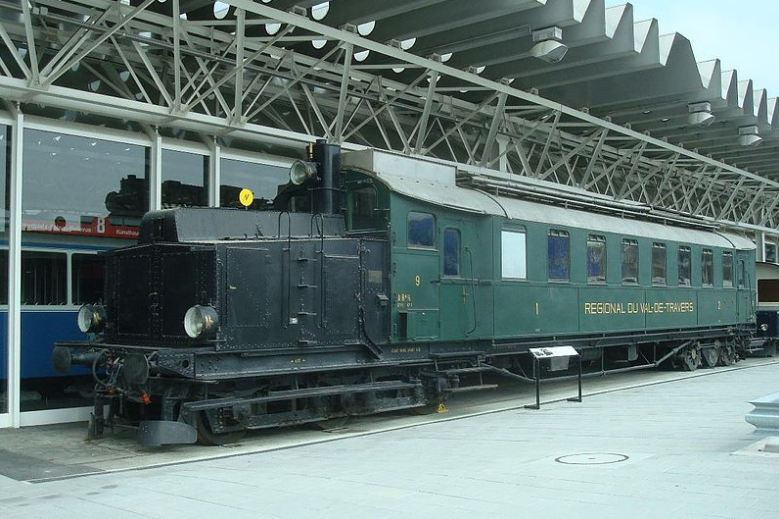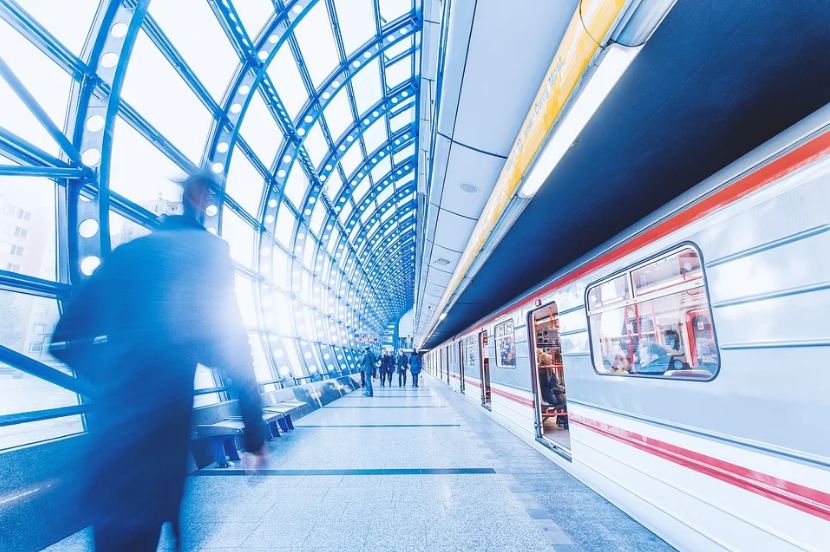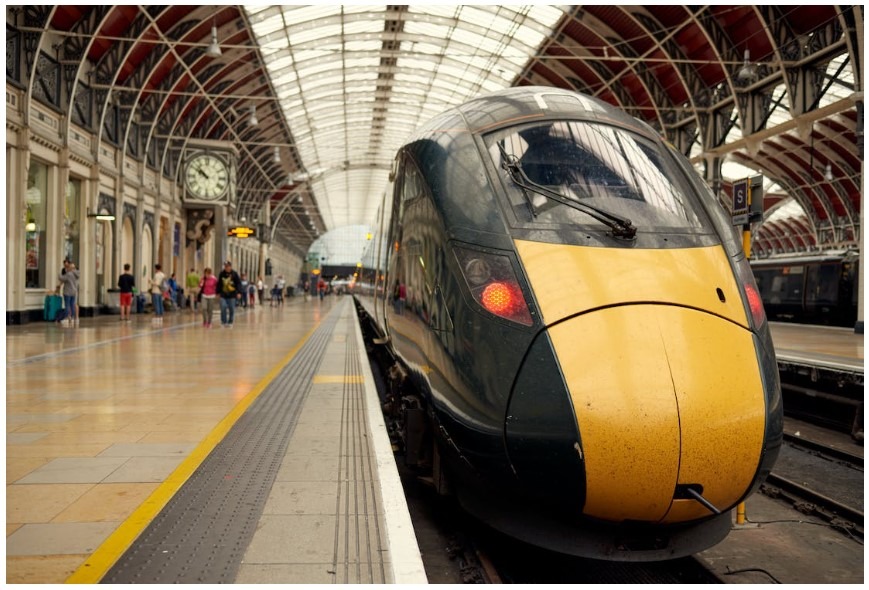Using Apps and Websites for Real-Time Train Tracking
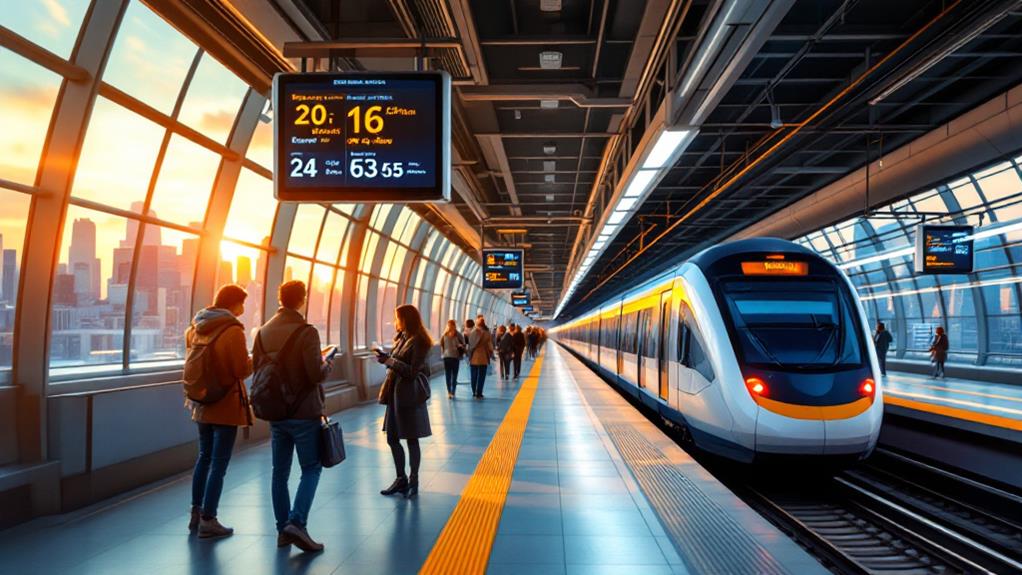
Real-time train tracking apps and websites have revolutionized how you plan and execute rail expeditions. Popular platforms like Real Time Trains, Open Train Times, and Darwin offer features such as live arrival and departure estimates, push notifications for delays, and comprehensive itinerary planning. These tools employ reliable data sources, including Network Rail's feeds and updates from train operating companies.
You'll find both mobile apps and web-based solutions, each with unique advantages. Many platforms allow you to customize alerts, save favorite routes, and integrate with ticketing systems. As technology advances, train tracking continues to evolve, promising even more precise and user-friendly experiences in the future.
Popular Train Tracking Platforms
Five popular train tracking platforms stand out in the UK rail network. Real Time Trains (RTT) leads the pack, utilizing Network Rail's TRUST and TD data feeds to provide extensive information on train movements, including cancellations and diversions. Open Train Times (OTT) offers maps and train tracking, though some headcodes may be unreadable. To compensate for TRUST data limitations, RTT calculates its own estimated times.
Darwin, developed by National Rail, uses TRUST and DA feeds to deliver accurate passenger information. It receives updates directly from train operating companies during disruptions, ensuring reliability. The UK Train Times app by Agant and the Commuter Train Check app cater to users with specific, frequent commutes, offering convenient live train times and trip planning.
For those seeking a thorough view of train movements, live-departures.info provides access to Darwin's live departures information. This platform's integration capabilities with other tools enhance route planning practices. When choosing a train tracking platform, consider your specific needs. Data accuracy, real-time updates, and user-friendly interfaces are key factors to evaluate. Some practices may include comparing multiple sources for the most up-to-date information during your travels.
Key Features of Tracking Apps
Building on the variety of train tracking platforms available, let's investigate the key features that make these apps indispensable for commuters and travelers alike. These apps offer a range of functionalities that transform your travel experience:
- Real-time arrival and departure estimates
- Push notifications for delays and service changes
- Itinerary planning with multiple transport options
- Integrated fare systems for seamless connections
- Comprehensive network maps and station information
You'll find that the handling of data in these apps is vital for providing accurate, up-to-the-minute information. As you plan your trip, you'll receive updates on train locations, platform changes, and any disruptions to your route.
The integration with other transport modes allows you to seamlessly plan multi-leg journeys, combining trains with buses or other services. It's important to reflect on the apps' privacy practices, as they often collect location data to provide personalized services. However, this data also contributes to long-term planning, helping transport authorities analyze commuter patterns and make informed decisions about network expansion and environmental impact.
Data Sources and Reliability
The backbone of any effective real-time train tracking system lies in its data sources and their reliability. When you're using tracking apps or websites, you're primarily relying on information from Network Rail's TRUST and TD data feeds. These sources provide essential details about train locations and movements, forming the foundation of real-time updates.
To enhance accuracy, especially during disruptions, train operating companies may provide direct updates to supplement the main data feeds. This multi-source approach helps address limitations and inconsistencies in the underlying data, ensuring you receive the most up-to-date information possible.
As you use these tracking services, it's important to understand their data use and privacy practices. Transparency about data sources and potential limitations allows you to gauge the reliability of the information you're receiving. Keep in mind that real-time tracking systems must handle platform changes, cancellations, and other disruptions effectively to maintain their usefulness.
Mobile vs. Web-Based Solutions
When it comes to accessing real-time train tracking information, you'll find two main options: mobile apps and web-based solutions. Each has its strengths and weaknesses, catering to different user needs and preferences.
Mobile apps excel at providing:
- Real-time updates
- Push notifications
- Customization features
- On-the-go access
- Trip planning capabilities
Web-based platforms, on the other hand, offer more exhaustive data sources and desktop-friendly interfaces for in-depth train tracking. They're better suited for thorough analysis and may include handling of complex data use practices.
Your choice between mobile and web-based solutions depends on factors like your travel frequency, preferred platform, and desired feature set. If you're a frequent traveler who needs quick updates on the go, a mobile app might be your best bet. However, if you require more detailed information and prefer a larger screen, a web-based solution could be more appropriate.
For the most complete and flexible passenger information experience, consider utilizing a combination of both mobile apps and web-based tools. This approach allows you to exploit the strengths of each platform, ensuring you're always well-informed about your train trip.
Customization and Personalization Options
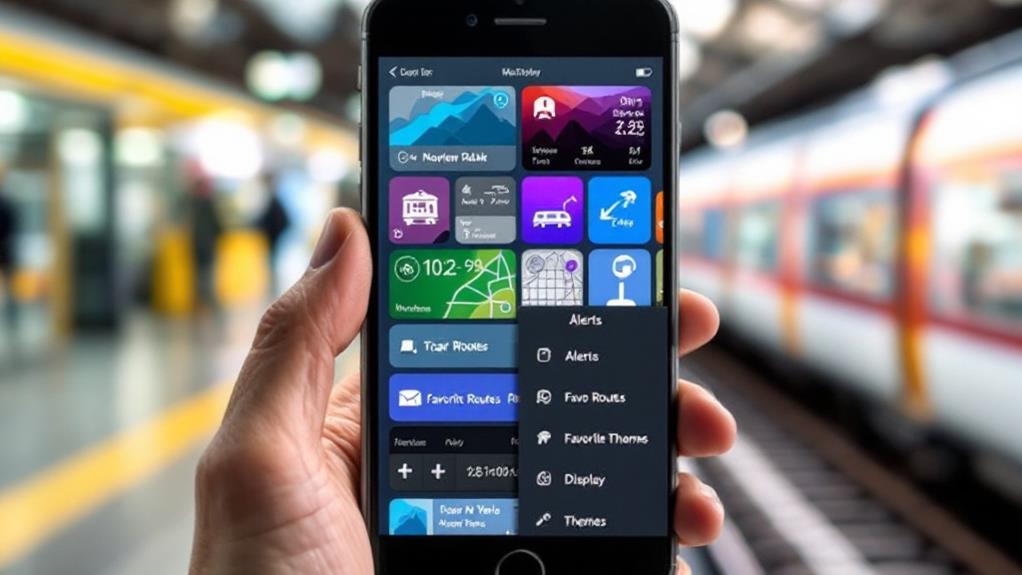
Real-time train tracking platforms have adopted customization and personalization options to enhance user experience. You can now tailor these apps and websites to your specific transit needs, making your daily commute or occasional travel more efficient and enjoyable.
Many platforms allow you to save your favorite routes, set preferred departure and arrival times, and access detailed schedules and fare information. You'll find options to customize alerts for your chosen routes, stations, or specific train services. This means you'll always stay informed about the services that matter most to you.
You can often adjust map views and filter information based on your preferred travel mode. Push notifications keep you updated on service changes or disruptions, ensuring you're never caught off guard. Some advanced features let you explore data, integrate with your calendar app, and receive estimated travel time updates based on historical performance.
These personalization options make it easier for you to traverse public transit systems. However, it's important to be aware that increased data use and privacy practices may include collecting more of your personal information. Always review the platform's privacy policy to understand how your data is being used and protected.
Integration With Journey Planning
Building on the personalization features, modern train tracking platforms now integrate seamlessly with trip planning tools. This integration allows you to access comprehensive travel information in one place, combining real-time train data with route planning capabilities. You'll find that these integrated systems offer a more efficient and user-friendly experience, helping you optimize your travel plans.
When using these integrated platforms, you can:
- View live train locations and arrival times
- Plan multi-leg journeys across different transportation modes
- Receive instant alerts about service disruptions or changes
- Access mobile ticketing options
- Get door-to-door navigation assistance
The integration of train tracking with journey planning leverages data use to provide you with a complete depiction of your trip. You'll be able to make informed decisions about your travel, whether it's choosing the best route, finding alternative options during delays, or planning connections between different modes of transport. As developers continue to enhance these platforms, you can expect even more sophisticated features, such as personalized recommendations based on your travel history and preferences. By embracing these integrated solutions, you'll streamline your train travel experience and enjoy greater convenience and flexibility in your travels.
User Experience Considerations
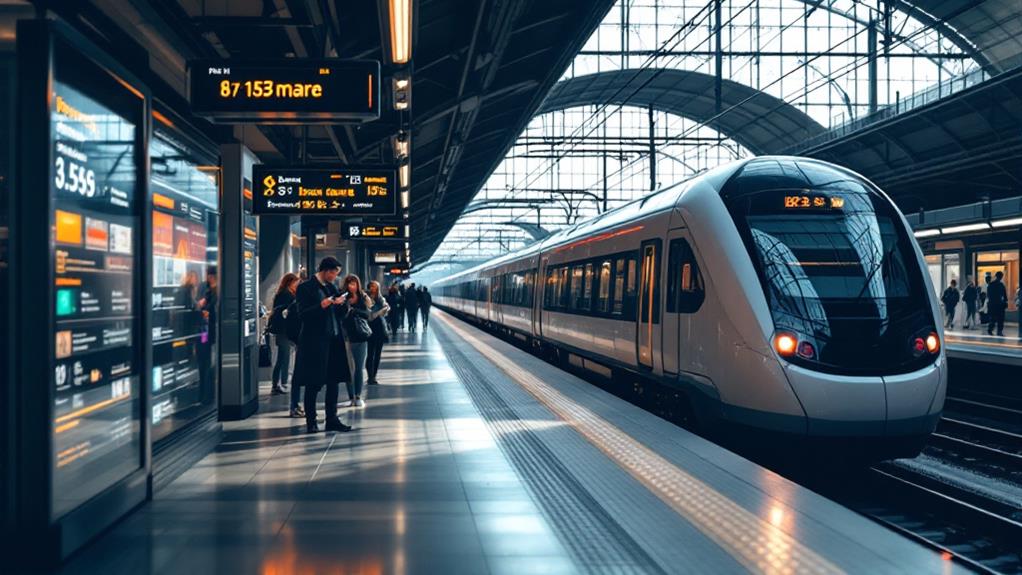
At the heart of effective train tracking systems lies a well-designed user experience. When using apps or websites for real-time train tracking, you'll find that intuitive interfaces and easy navigation are pivotal for quick access to the information you need. Look for platforms with mobile-optimized designs, guaranteeing you can track trains effortlessly on your smartphone or tablet while on the move.
One of the most precious features you'll encounter is offline functionality. This allows you to continue tracking trains even when your internet connection is spotty or unavailable. To make the most of your train tracking experience, take advantage of personalization settings. These let you customize alerts and preferences, tailoring the app to your specific needs and travel habits.
As you use these platforms, pay attention to the data use. Some apps may consume more data than others, so choose one that aligns with your mobile plan. If you encounter any issues or have suggestions for improvement, look for reliable customer support and feedback channels. These help ensure that your needs are addressed promptly, enhancing your overall user experience with real-time train tracking tools.
Future Trends in Train Tracking
As we look ahead, the terrain of train tracking is positioned for revolutionary changes. You'll witness a transformation in how data is used and presented, thanks to advancements in technology and infrastructure. Real-time tracking will become more precise and responsive, leveraging 5G networks and edge computing to reduce latency and enhance accuracy.
Artificial intelligence and machine learning will play a critical role in predicting delays and disruptions, providing you with more reliable information. You'll experience seamless journey planning as multimodal apps integrate live train data, offering extensive transportation solutions.
Future trends in train tracking include:
- Enhanced security and transparency through blockchain-based ticketing
- Smart infrastructure for improved network monitoring
- AI-powered predictive maintenance
- Augmented reality for in-station navigation
- Personalized travel recommendations based on historical data
As described, these innovations will revolutionize how you interact with train systems. The data use in train tracking will become more sophisticated, offering you unparalleled insights into your journey. You'll have access to real-time updates, accurate predictions, and personalized recommendations, all while benefiting from enhanced security measures. The future of train tracking promises a more efficient, user-friendly, and data-driven experience for passengers worldwide.


